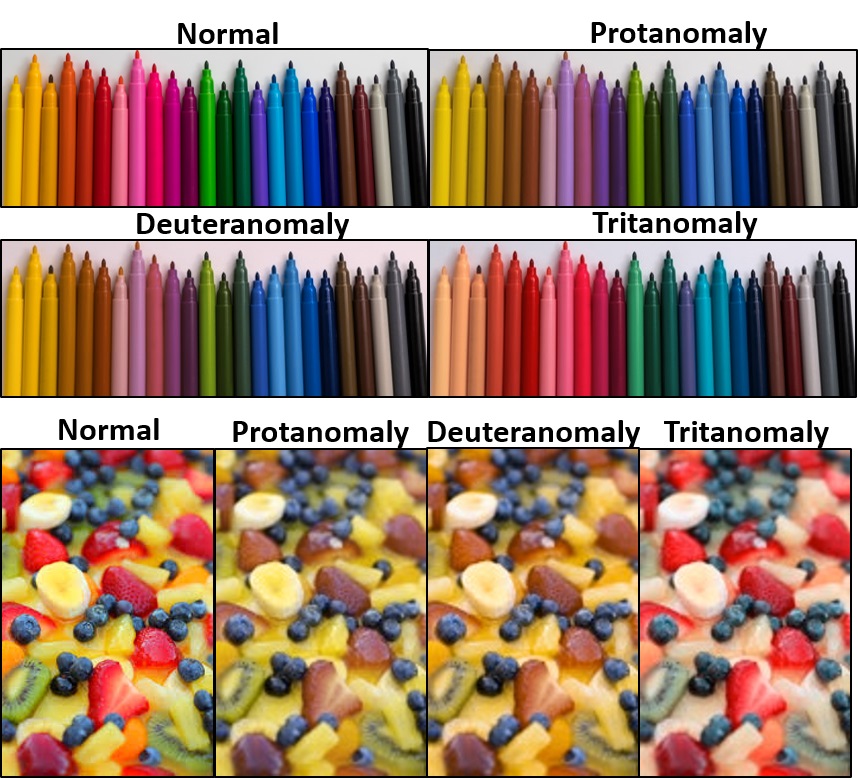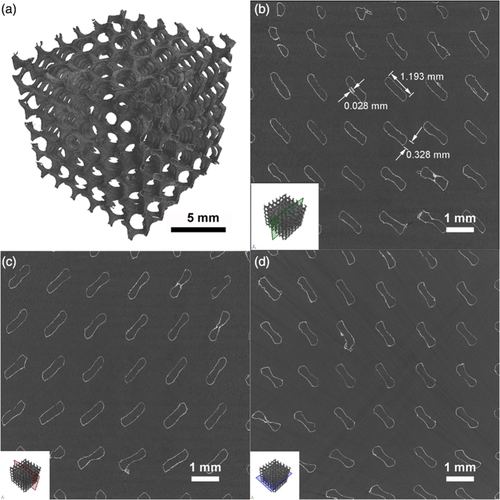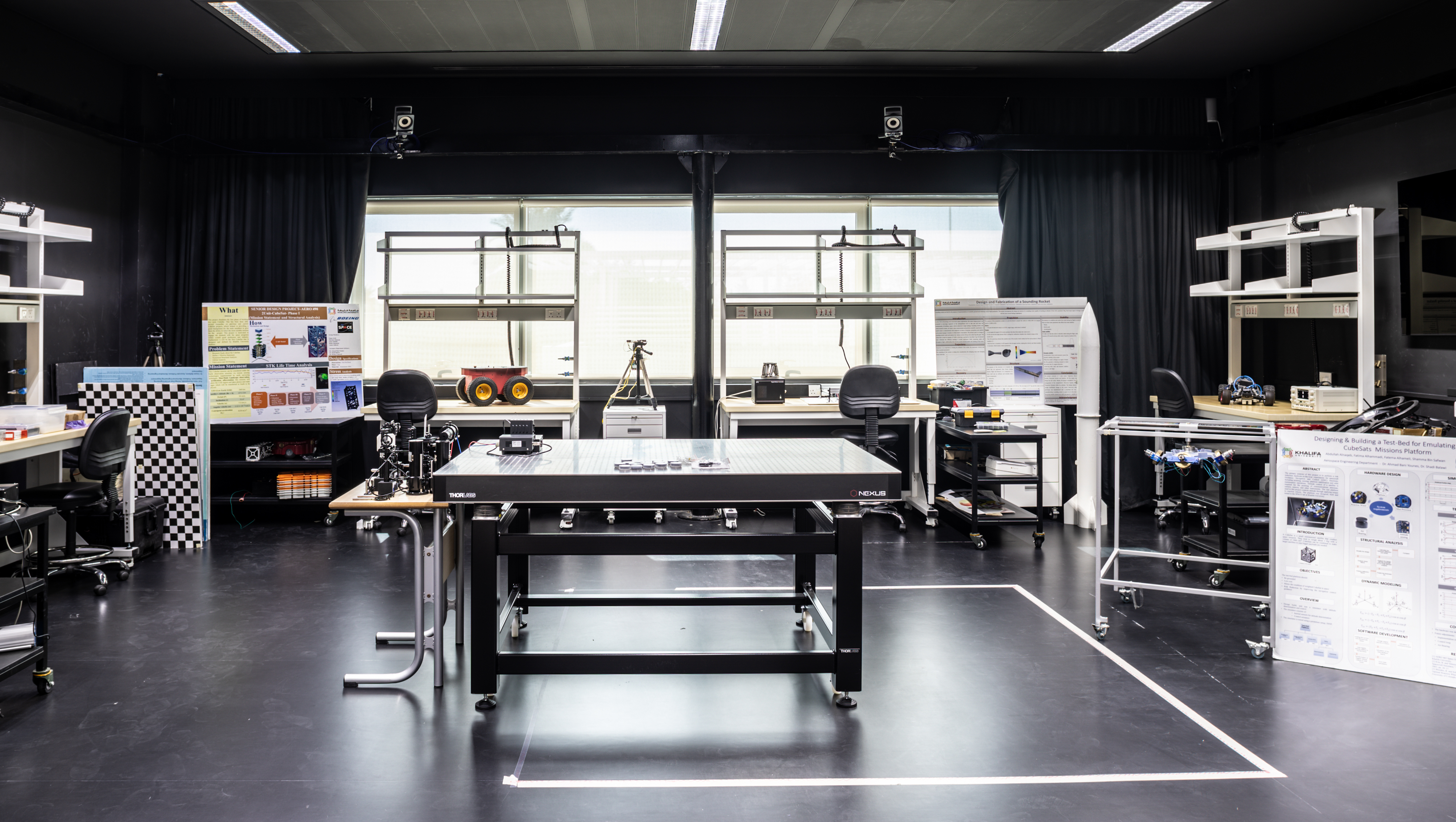
Using red-tinted glasses can make colors more prominent, but achieving this correction in a comfortable manner is more challenging.
A collaborative team of researchers from Khalifa University and Imperial College London has developed a new contact lens that could help people with color blindness. Rather than the conventional approach, using dyes to tint lenses, the research team uses gold nanoparticles to filter red and green light, creating a safer way to see colors.
The research team includes Dr. Haider Butt, Associate Professor of Mechanical Engineering, Dr. Mohamed Elsherif, Postdoctoral Fellow, Dr. Fahad Alam, Postdoctoral Fellow, and recent MSc graduate Ahmed Salih, all from Khalifa University, along with Dr. Alil Yetisen, Associate Professor of Chemical Engineering at Imperial College London. They published their work last month in ACS Nano.
Problems with distinguishing red from green restrict people from working in fields where color recognition is critical, but can also have everyday ramifications as simple as deciding whether a banana is ripe or selecting matching clothes.
The retina of the eye has three types of cones: one perceives blue light, another green, and the third red. These cones work together to allow people to see the whole spectrum of colors, except when one doesn’t work properly.
“Color vision deficiency (CVD), more commonly known as color blindness, is an inherited ocular disorder that limits the sufferer’s ability to distinguish between specific colors,” explained Dr. Butt. “Red-green color blindness is the most prevalent form of CVD, with most sufferers relying on wearables to manage the difficulties in day-to-day tasks. The most common wearable is a form of tinted glass.”
Deuteranomaly, which occurs mostly in men, is a condition in which the photoreceptor responsible for detecting green light responds to light associated with red. This can be improved using red-tinted glasses, which make the colors more prominent, but achieving this correction in a comfortable manner is more challenging. Glasses based on this approach are commercially and readily available, but they are bulky and can be uncomfortable. Contact lenses do exist, but their reported effectiveness varies among tested patients and the stability of the dyes within the contact lenses is insufficient for daily use.
“Research on CVD management techniques has shown that dyed contact lenses are expensive and have leaching and toxicity problems,” explained Dr. Butt. “We used gold nanoparticles instead. Noble metal nanoparticles, particularly gold and silver, have excellent electrical and optical properties, making them suitable for various biomedical applications, while they also display excellent light absorption and scattering properties.”
Conventional color-correcting lenses are made with certain minerals to absorb and filter out some of the wavelengths between green and red that confuse the photoreceptors. With less color overlap, the brain gets a clearer signal to help distinguish between the problem colors, but this does reduce the amount of light getting into the eye.
Gold, on the other hand, has been used for hundreds of years in cranberry glass, where red glass is made by adding gold salts to molten glass. Gold nanocomposites are non-toxic and scatter light in such a way as to create this red glass look. The researchers believed this scattering quality could be leveraged and incorporated into contact lens material to improve the red-green contrast safely and effectively.
Dr. Butt and colleagues put their theory to test and designed a contact lens with embedded gold nanoparticles that successfully filtered out the range of optical wavelengths at which CVD patients have difficulty distinguishing between specific colors.
The gold nanoparticles were embedded into a hydrogel polymer, which was shaped into the contact lenses, producing rose-tinted gels that filtered the light where red and green overlap. Importantly, the lenses were also studied for the effect of the nanoparticles on the water content and hydration for the eyes. The researchers found that the gold did not have an appreciable effect on the water content of the gel, meaning it can be used in contact lens applications without any undesirable side effects.
When compared with commercially available glasses and dyed lenses, the team’s lenses were just as effective, with comparable water content.
Now, the team aims to investigate the oxygen permeability of the hydrogel used in their lenses, before they can be deployed and help people with CVD to see the world differently.
The research is jointly funded by Sandooq Al Watan, Aldar Properties, and Khalifa University.
Jade Sterling
Science Writer
5 April 2021





